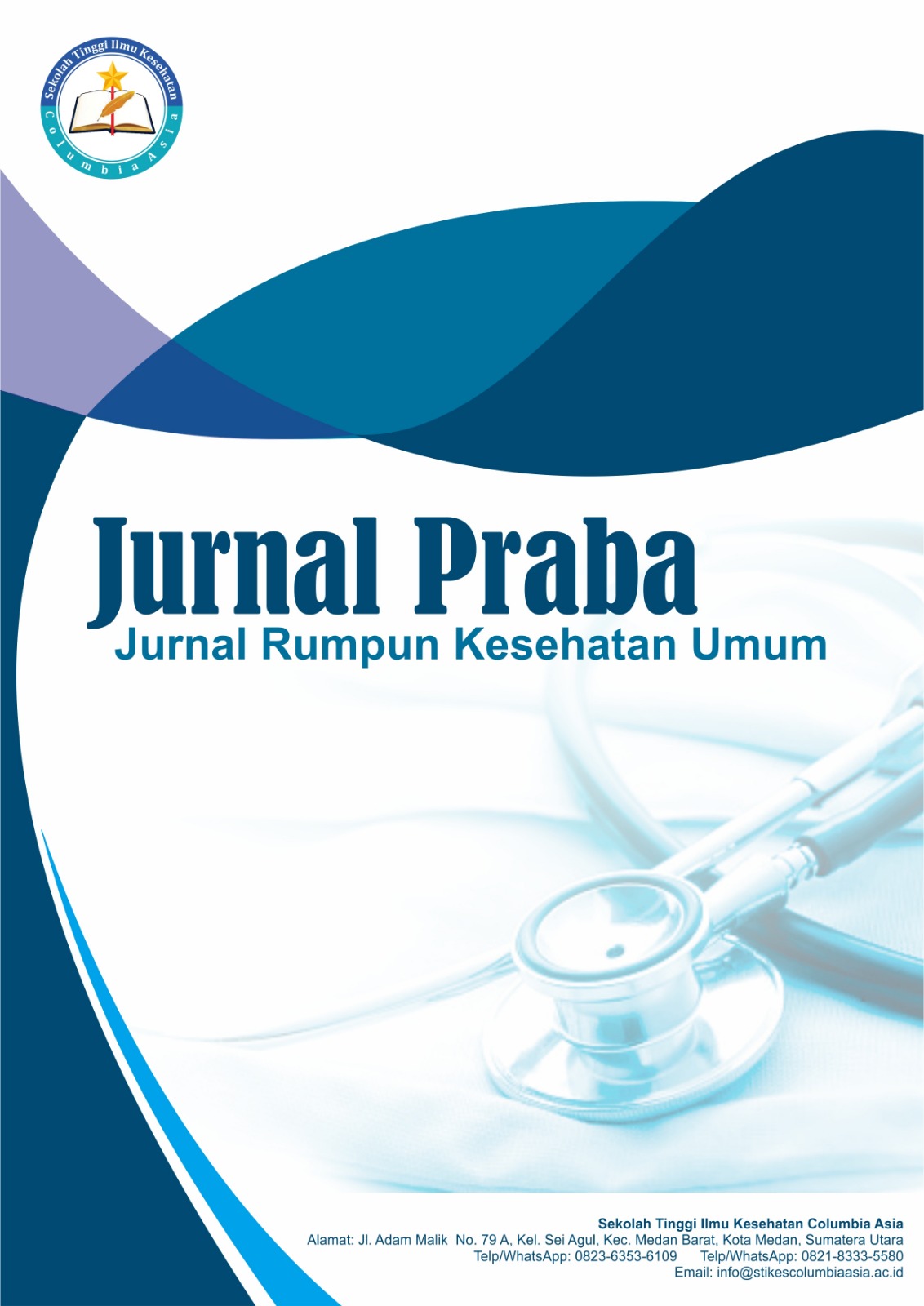Narrative Review: Transformasi Kesehatan Dan Keselamatan Kerja Di Era Digitalisasi Pelayanan Kesehatan
DOI:
https://doi.org/10.62027/praba.v3i2.498Keywords:
digital health, hospital safety, occupational health and safety, patient safetyAbstract
This narrative review aims to explore the transformation of occupational health and safety (OHS) in the era of healthcare digitalization. The background highlights the increasing complexity of hospital services and the urgent need to integrate digital innovation into OHS programs. The method used was a narrative review based on 32 articles published between 2020 and 2025, selected through systematic search in PubMed, Scopus, ScienceDirect, and Google Scholar. The findings indicate that digital health technologies, including wearable devices, electronic incident reporting systems, and mobile applications for infection control, significantly enhance the effectiveness of OHS by improving compliance, strengthening safety culture, and reducing hospital-acquired infections and adverse events. Nevertheless, challenges remain regarding infrastructure readiness, digital literacy, and data security. The implications of this study suggest that hospitals and policymakers should consider digital-based OHS strategies as an integral part of patient safety improvement and quality health services.
References
Alzahrani, F., & Kyratsis, Y. (2020). Safety culture in healthcare organizations: A systematic review of literature. International Journal for Quality in Health Care, 32(5), 325–333. https://doi.org/10.1093/intqhc/mzaa046.
Carayon, P., & Hoonakker, P. (2020). Human factors and ergonomics in health care and patient safety. BMJ Quality & Safety, 29(1), 1–3. https://doi.org/10.1136/bmjqs-2019-010901.
Gurses, A. P., & Kim, G. (2021). The impact of teamwork and communication on patient safety: A review. BMJ Open Quality, 10(2), e001123. https://doi.org/10.1136/bmjoq-2020-001123.
Jeffs, L., Berta, W., Lingard, L., & Baker, R. (2020). Learning from near misses: From quick fixes to closing off the Swiss cheese holes. BMJ Open Quality, 9(1), e000880. https://doi.org/10.1136/bmjoq-2019-000880.
Khoshakhlagh, A. H., & Moradi, F. (2022). Safety climate and patient safety: A cross-sectional study in teaching hospitals. International Journal of Occupational Safety and Ergonomics, 28(3), 1873–1881. https://doi.org/10.1080/10803548.2020.1868634.
Kurniawan, A., & Putri, M. (2022). Adoption of electronic incident reporting systems in Indonesian hospitals: Barriers and opportunities. Jurnal Administrasi Kesehatan Indonesia, 10(3), 201–210. https://doi.org/10.20473/jaki.v10i3.2022.
Lee, J., Park, S., & Kim, H. (2023). Linking occupational safety programs to patient safety outcomes: A systematic review. Safety Science, 165, 106241. https://doi.org/10.1016/j.ssci.2023.106241.
Lee, S. H., Choi, J., & Lee, Y. J. (2024). The effectiveness of occupational health interventions in healthcare: A systematic review. International Journal of Environmental Research and Public Health, 21(4), 1356. https://doi.org/10.3390/ijerph21041356.
Moher, D., Liberati, A., Tetzlaff, J., Altman, D. G., & The PRISMA Group. (2020). Preferred reporting items for systematic reviews and meta-analyses: The PRISMA statement. PLoS Medicine, 6(7), e1000097. https://doi.org/10.1371/journal.pmed.1000097.
Mulyani, D., & Handayani, S. (2023). Evaluasi penerapan K3 dalam akreditasi rumah sakit di Indonesia. Jurnal Kesehatan Masyarakat Nasional, 18(2), 89–97. https://doi.org/10.21109/kesmas.v18i2.2023.
Nugroho, A., & Puspitasari, R. (2022). Pengaruh implementasi digital health terhadap mutu pelayanan rumah sakit. Jurnal Manajemen Pelayanan Kesehatan, 25(1), 33–42. https://doi.org/10.21460/jmpk.2022.25.1Patel, K., & Thomas, P. (2021). Infection control and patient safety: Lessons from COVID-19. American Journal of Infection Control, 49(7), 882–889. https://doi.org/10.1016/j.ajic.2021.01.020.
Simamora, R. H., & Sitohang, L. (2023). The relationship between occupational safety and patient safety incidents in Indonesian hospitals. Indonesian Journal of Health Administration, 11(1), 55–64. https://doi.org/10.20473/ijha.v11i1.2023.
Smith, J., & Johnson, R. (2021). Occupational health and patient safety: A systematic review. Journal of Safety Research, 78, 45–56. https://doi.org/10.1016/j.jsr.2021.02.003.
Suryani, T., & Putra, H. (2023). Occupational safety culture in Indonesian hospitals: Challenges and opportunities. Asian Journal of Occupational Health, 5(1), 15–27. https://doi.org/10.11591/ajoh.v5i1.2023.
Wulandari, R., & Santoso, B. (2021). Occupational health and safety management in hospitals: An Indonesian perspective. BMC Health Services Research, 21(1), 1125. https://doi.org/10.1186/s12913-021-07225-x.
World Health Organization. (2021). Global patient safety action plan 2021–2030: Towards eliminating avoidable harm in health care. Geneva: WHO Press.
Zhang, Y., Li, J., & Wang, P. (2020). Hospital safety climate and adverse patient outcomes: A systematic review and meta-analysis. International Journal of Nursing Studies, 104, 103512. https://doi.org/10.1016/j.ijnurstu.2020.103512.
Zhang, X., Wang, Y., & Zhao, L. (2021). Wearable technology for healthcare workers: Improving safety and reducing fatigue. Journal of Medical Systems, 45(7), 89. https://doi.org/10.1007/s10916-021-01791-6.
Zhao, H., & Chen, Y. (2024). Digital transformation in healthcare safety management: Opportunities and challenges. Journal of Health Management, 26(2), 233–247. https://doi.org/10.1177/0972063424123456.
Downloads
Published
How to Cite
Issue
Section
License
Copyright (c) 2025 Jurnal Praba : Jurnal Rumpun Kesehatan Umum

This work is licensed under a Creative Commons Attribution-ShareAlike 4.0 International License.







